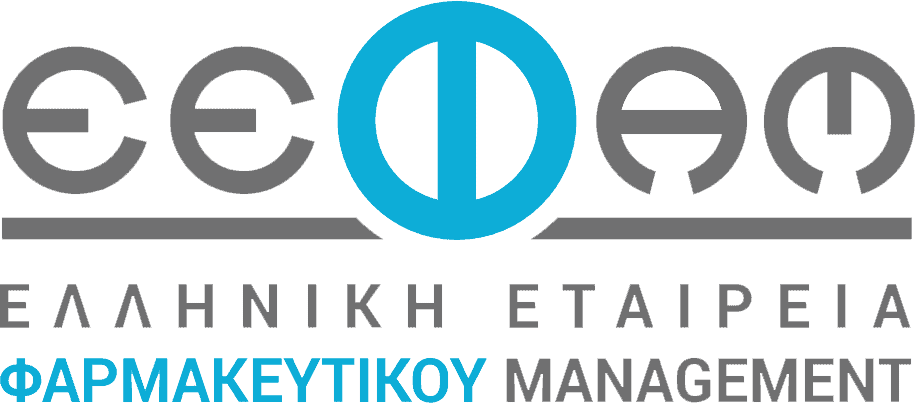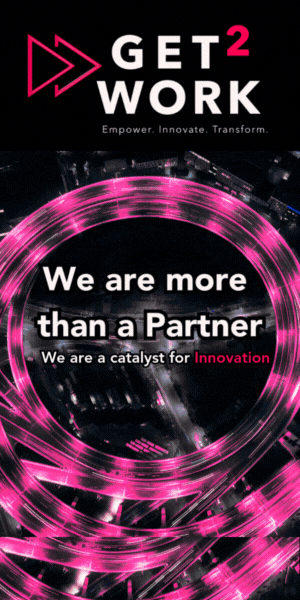Blog
Blog
What will it take for working women to rise?

Change can be challenging—and slow. Case in point: a decade of research on Women in the Workplace, conducted by McKinsey in partnership with LeanIn.Org, discloses several areas where women still lag behind their counterparts. In this episode of The McKinsey Podcast, McKinsey senior partners Alexis Krivkovich and Lareina Yee speak with global editorial director Lucia Rahilly about where women’s experiences have improved, stalled, and even worsened over the past ten years, as well as how to finally hasten the pace of change.
The McKinsey Podcast is cohosted by Roberta Fusaro and Lucia Rahilly.
The following transcript has been edited for clarity and length.
On the horizon
Lucia Rahilly: Listeners, welcome. And Roberta, hello!
Roberta Fusaro: Hello, Lucia!
Lucia Rahilly: Did you hear the big news? We’re celebrating the 60th birthday of our flagship publication, the McKinsey Quarterly. It is live. And you can read it for free. Just go to McKinsey.com and subscribe.
Roberta Fusaro: The current edition focuses on the wild ride that’s been the state of technology and what it means to society, business, and leadership. Lucia, did you know that only 60 years ago, people had just been introduced to touch-tone telephones?
Lucia Rahilly: That’s incredible. And now we wear computers on our wrists.
Roberta Fusaro: Yes, and 60 years from now, there’s an industry that might look and feel very different from how it’s experienced today, especially with the advent of generative AI: banking. In fact, our Global Banking Annual Review is now live on our website.
Lucia Rahilly: Big picture, there’s skepticism about banks’ ability to create long-term value. Our article reveals what successful banks are doing to get value creation right.
Roberta Fusaro: And now, let’s hear about the recently published Women in the Workplace report with senior partners Alexis Krivkovich and Lareina Yee.
Battling change fatigue
Lucia Rahilly: In another anniversary, this year marks year ten of our Women in the Workplace research, conducted in partnership with Lean In. Before we home in on some of this year’s headline insights, let’s talk about what the catalyst was for initiating this research.
Alexis Krivkovich: My origin story is very personal. Not long after I had become an elected partner at McKinsey, I attended my first global partner meeting. I’d never spent time with our full global partnership.
I walked into the room and was stunned because I’d expected to see so many women. I don’t know why, in hindsight. But what I saw was a room that, as I now know, looked a lot like what we saw in most C-suites across corporate America ten years ago: less than one in six women.
I couldn’t believe that in 2015, this was our situation. It was a wake-up call because I had two young daughters, and I was about to find out I was pregnant with my third. And I thought, “Gosh, I don’t want them to fast-forward 25 years and walk into the same room.”
Lucia Rahilly: Lareina, how about you?
Lareina Yee: I was a recently elected partner and found myself noticing that I doubled the number of women every time I walked into a client meeting. There was one woman from the client, and then there was me. That was one observation.
Second, I had an amazing sponsor, and he sat down with me and said, “Lareina, consider how you can do more, have more impact beyond what you’re doing today. If you were to dream about creating something at McKinsey, what would that be?” I thought about that and came back and said, “I’d like to see how we could use McKinsey analytics to solve the lack of women at the top.”
Lucia Rahilly: That’s a great story. And now here we are. For this year’s report, McKinsey interviewed 15,000 employees. Let’s hear what one of them had to say, as read by one of our colleagues. For context, this is a Black woman manager. She says:
Manager: The biggest barrier is will. I don’t know if we have the will to make overarching changes to the way that we view the workplace, because the status quo is working for a bunch of people.
Alexis Krivkovich: What we see this year, for the first time in the decade we’ve been following this data, is that companies are starting to step back from their commitment. And we see that in a couple of ways. First, the number of companies that put diversity as a top priority on their agenda has fallen for the first time, and that’s incredibly concerning because we’re mid-innings in this journey. We haven’t achieved parity, and to have companies pulling back already is a real warning signal. But beyond that, we see other places where the prioritization of programs, the support that’s being offered on the margin, is drifting backward, not forward.
Lucia Rahilly: What do you think is causing companies to deprioritize these initiatives?
Alexis Krivkovich: On the surface, I think most companies would tell you there’s a lot of complexity in the market today—supply chain shocks, inflation, unpredictable market demand environment, talent shifts—and they need to focus their near-term attention elsewhere.
Underneath it, my worry is that we’re facing fatigue before we’ve made enough progress and that this issue of creating equal access for all great talent of every type—women and men of every race, every socioeconomic background—has been reframed as a zero-sum game. Done right, it’s not a zero-sum game. Companies that win on diversity are those that also win on helping all talent access the coaching, development, manager support, programs, and sponsorship they need to thrive and grow.
What’s better for women at work
Lucia Rahilly: Women are often described as less apt to put themselves forward for promotion, which can lead folks to say they’re less ambitious or less amenable to hard work, for example, than men. What does the research tell us about women’s interest and aspiration to advance at work?
Lareina Yee: I don’t think we should confuse being polite with being ambitious. Women may pause to let someone else express their views. They may pause in politeness to let someone else raise their hand. That doesn’t mean their hand wasn’t raised. Women are incredibly ambitious to be leaders in their organizations, to get to the next level. Ambition is not the issue. The issue is the system and all the hurdles they face to fulfill that potential.
Lucia Rahilly: Alexis, you referred to being mid-innings in the game of getting to parity. Let’s talk about the gains women have made over the past ten years and what our research has revealed.
Alexis Krivkovich: The biggest gains we’ve seen have been at the very top. The bright spot over the last decade has clearly been in the C-suite, from 17 percent women’s representation to 29 percent. That’s a huge gain and absolutely something to celebrate.
But there’s a lot of fragility in that progress. First, the way companies got there is not a playbook they can apply looking forward. On average, companies added a seat at the table in the C-suite. And they tried hard, when they didn’t have diversity, to fill that seat with a woman. Those roles were largely what we call staff roles: CHROs, finance leaders, general counsel. But they don’t tend to ladder to the CEO, and they often don’t have as much mobility into owning and driving business outcomes directly. So companies can’t repeat that play.
Something’s broken inside a lot of companies, with their ability to grow that talent and help move that talent forward.
Alexis Krivkovich
Second, to fill that seat with more diverse talent, they looked outside their organization, not inside. And when you look back down the pipeline, where you should expect to see more and more talented women rising up, waiting for those next big jobs at the top, you don’t. You see this flattening out and a much slower progress curve, which suggests that something’s broken inside a lot of companies, with their ability to grow that talent and help move that talent forward.
Lucia Rahilly: Let’s talk about what specific practices companies have implemented to enable women’s advancement. Even if companies aren’t promoting internally, the women they’re bringing in must be advancing elsewhere—so that advancement is happening. What’s helping these women make it up the ladder?
Lareina Yee: A lot of things in corporate America are considerably better a decade later. For example, it is incredibly commonplace for companies to offer parental leave, to have actually increased the number of weeks related to that paid leave. Many companies have bereavement. They have elderly care.
They have thought about an array of benefits that are incredibly meaningful. And it is not an exception; it’s more the norm. We see that in the data. In fact, we asked fewer questions about benefits and policies because many are in place in a sustained, secure way.
When we think about recruiting, we’ve seen so much progress both in companies diversifying when they find talent but also in providing some of those bias busters and mechanisms in how they recruit, interview, and look at talent to make sure that women are given a fair shake. And many companies are finding that their entry point is actually considerably higher than when they started ten years ago. These are real gains.
The other category where we’ve made real gains is flexibility. Before COVID, flexibility was the number one thing women felt they needed that they weren’t getting in the workplace: flexing your hours, your location, how you get things done, and your manager not having to see you doing the work. That has really evolved. But Lucia, I’m sure you and Alexis know that while these are meaningful pieces that materially affect the day-to-day experience of women, we are a far cry from equal experience.
What’s slow to change
Lucia Rahilly: That’s a great segue to our next clip, which is from a Southeast Asian woman manager. Here’s what she says:
Manager: The best thing companies can do for mothers is to have a very clear maternity leave benefit and support flexibility. It’s just not fair for women to feel like they need to make a trade-off between taking care of their kids and going to work.
Lucia Rahilly: Women tend to be the primary caretakers of children and sometimes aging parents. Some companies are now talking about returning to the office. How do we anticipate this affecting working mothers?
Lareina Yee: I don’t think we need to be afraid of returning to the office. First, returning to the office has a lot of benefits, and some of what we’ve learned is that it can support greater apprenticeship and improve your networks and access to sponsors—some of the informal interactions that help you build the equity to support your advancement over time.
That said, being in the office five days a week may not fit everybody. This is a tough topic, but the first point is there are some benefits to being in the office. The second is that I think it’s less about how often you’re in the office and more about the ability to architect your career with flexibility when you need it and being in a work environment that provides many of the things—office policy being one of them—that allow for flexibility when it matters.
Alexis Krivkovich: I’d argue that this woman is asking the question because, in society, we still haven’t solved for the responsibilities beyond the workplace. We see clearly in our data—and this has not changed in the past decade—that women are far more likely, irrespective of their earning power in the workplace, to disproportionately hold the household, childcare, and eldercare responsibilities at home. The reason you feel that burning need for extra flex is because you’re holding another half- to full-time job outside the workplace that your peers, in many cases, are not. That has not changed generationally or over time.
What’s worse
Lucia Rahilly: This next clip comes from a Latina senior manager who says:
Senior manager: I’m a young woman currently in a manager role. I think that speaks volumes to the way this industry has grown. But things have also gotten worse for women.
Lucia Rahilly: Reaching the C-suite is still really hard for women. The latest research again points to the fragility of the pipelines for women at the entry and managerial levels. Give us some examples of the kinds of barriers women experience.
Alexis Krivkovich: At the start, we don’t see our fair share of diverse talent coming into the corporate pipeline. Women have graduated with more than 50 percent of the college degrees for each of the past 30 years, but they only make up 48 percent of the entry pipe. And this year it’s actually a little bit less.
You may say, “Forty-eight percent? That feels pretty close to 50 percent.” But this is the law of very large numbers. It makes a huge difference to access. And then when you look for women of color, that number becomes more challenged very quickly.
Let’s take the story of Latinas. This year, Latinas face the most challenging broken rung—the least equity in their attempt to advance into manager seats that we’ve ever seen. For every 100 men, 65 Latina women get that first step up to manager. That’s the moment when companies bet on you for your pipeline and your pathway to the top, and far fewer Latina women are getting that first shot up.
Fast-forward to the C-suite. Latinas make up 9.6 percent of the population and just 1.4 percent of the C-suite. We should see one out of ten companies having a Latina sitting at their table, but it’s more like one in a hundred.
Lucia Rahilly: And what accounts for that acute imbalance?
Alexis Krivkovich: Let’s start with the structural barriers. Very often the criteria we use to evaluate potential is incredibly biased. If you are an excellent leader but you don’t look like the prototype of the leaders who have come before you—and by definition, most women of color disproportionately don’t look like the leaders who came before them—you often get overlooked or undercounted relative to your potential.
Second, the day-to-day experience for women, particularly women of color, is simply different. The degree to which you’re challenged on your competency, the number of times someone taps you on the shoulder to offer you a stretch assignment, the individual coaching you get—it does not happen as frequently and with as much support as it does for men.
Lareina Yee: It’s death by a thousand cuts. And that is the “felt experience”—the exasperation and the tone that you hear when we do these interviews.
What can be done
Lucia Rahilly: Let’s turn to what, collectively, we can do to speed up the pace of change so that the three of us aren’t here in 2034 having this same conversation. We talked a little bit about advancement to manager. Let’s talk about hiring. Any thoughts about what’s working and not vis-à-vis debiasing the hiring process?
Alexis Krivkovich: One area of progress is that companies have made more efforts to formalize their hiring and advancement processes. They’re looking for bias. They’re trying to track and disrupt it. I’m hopeful that technology can help us here because technology could identify where we’re using stale, human-bias-based pattern recognition to tell us what we think good looks like, or ready-now succession looks like. When in fact, if you were able to look across all the patterns of performance in your company, you might see other places, other opportunities, and other individuals.
The second thing technology can do is even the playing field. Can we create access for people, accelerate capability building, and change onboarding to allow companies to be more creative about where they go for talent and how they seek out diverse talent?
Lareina Yee: Generative AI gives us new capabilities that would allow the things that Alexis just mentioned to be done at a scale, at speed, and actually at a cost that’s very reasonable for companies. And women can use technology as a tool to advance their own expertise and ability to succeed at work.
We could use new technologies like AI to debias in a more systematic way, to improve recruiting, and to improve the ability of women to have different types of skills and capabilities that allow them to rise.
Lareina Yee
Another source of optimism is access to capital and entrepreneurship. Today, women are around 2 percent of venture capital funding, and you don’t see as many women as founders. But that’s sort of a deceptive statistic because it’s where we have been historically.
Imagine if we changed that. You could see a very different future. Imagine that the terms of the game change, that access to capital changes, and that not having a computer science degree isn’t a barrier to having a job with technology. And also, that we could use new technologies like AI to debias in a more systematic way, to improve recruiting, and to improve the ability of women to have different types of skills and capabilities that allow them to rise.
Lucia Rahilly: Any practical suggestions for folks looking to practice allyship?
Alexis Krivkovich: The vast majority of people say they intend to be an ally to others in the workplace. And companies are trying to promote and encourage this as well. So it’s not a matter of good intention. It’s an issue of activation, and maybe a little skill building. It’s great to say, “I want to be an ally, and just let me know if there’s anything you need.” But it doesn’t work. What allies need to say is: “What have I done lately? What have I done today? What’s one more incremental action I could take with the frequency that might help change the game for a woman?”
One way everyone can be an ally is to help in the day-to-day experience, on behalf of someone else: “Oh, wait. I think Lareina wasn’t finished speaking.” “That’s a good point, but I think that’s the point she just made.” You actually help rebalance the power back, and you don’t tell the individual every time, “You need to advocate for yourself.” Sure, you do. But you’re already doing that every day. That’s why you’re exhausted.
Lareina Yee: Alexis gave some terrific examples. There are others, such as defending the work of a woman colleague if questioned. There’s also asking questions: “What are your professional ambitions? How can I help you?” Women who are incredibly ambitious know exactly how you can help. There’s saying, “Let’s get you on this really great project that’s going to have a lot of visibility to the CEO.” You don’t need to wait for some big policy, some big edict that comes from the top. This is something that everyone, both men and women, can do tomorrow.
Alexis Krivkovich: Let me give you one example every leader can do. Get out a piece of paper and write down the list of the people you think you’re sponsoring and mentoring. And then grade yourself on how diverse that list is. Many leaders will find that the list is not balanced. It’s more reflective of their own journey and the people they think they can most naturally coach and support.
The challenge is when two-thirds of your leaders are men but two-thirds of your sponsors and mentors are women—and that’s what we see in the data. You are asking your women to disproportionately carry a whole pipeline of talent along at a level they simply don’t have enough time or capacity to do.
Lucia Rahilly: Any final thoughts or recommendations on what can and should be done to help women advance more quickly?
Lareina Yee: Right now, the data shows that we won’t get to parity until two generations ahead, conservatively. That’s 50 years. These numbers aren’t good. We will not get there with incremental steps forward. We need discontinuous thinking.
How do we think differently about entrepreneurship and giving women founders access to capital? How do we think differently about the role that technical skills and capabilities can do to build experience capital—what you learn on the job, not what you came in the door with—to be qualified? How do we bet on women’s potential, not just their performance? How do we think about the manager layer, not just the very top? What actions can defrost that frozen middle? How do we think about our cooperation and collaboration with public sector entities, particularly educational institutions?
A lot of the challenge working in the office is: “What do I do about childcare?” Are we waiting for companies to pay for on-site childcare, or could we partner in the public arena, in our state and local governments, to think of something else? These are open questions, ideas. We’ve got a lot of smart men and women in the world. If we put our heads together, we could probably come up with a much better list.
Alexis Krivkovich: You don’t walk off the baseball field halfway through the game just because you’re down or you’re tired. We’ve seen progress, and the progress has helped. We just have to keep going. It will take a combination of rigor and persistence. It’s rigor to keep looking through every committee, every promotion process, and say, “Where do I see bias, and where can I root it out?” And it’s the persistence to keep going, to innovate, to fund things, to encourage managers, to incentivize, and to challenge when you don’t see the change.






